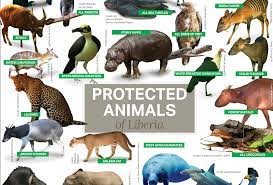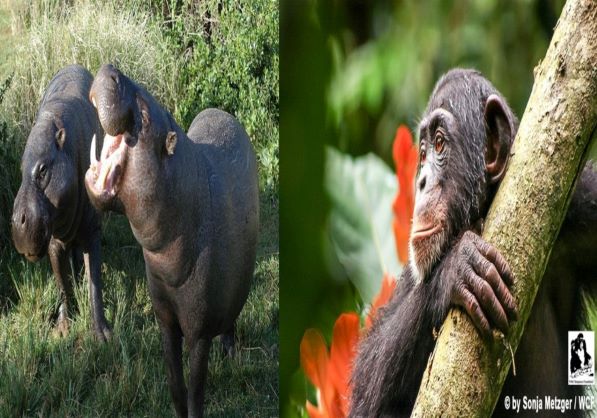PHOTO: Some of the endangered wildlife
By William Selmah, wselmah@gmail.com
Findings of a latest research show that now tops the alarming surge in West Africa in the global illegal trade in wildlife (IWT). East Africa had previously dominated the rest of the continent in the illegal trade.
“Since 2016, primary exit point for ivory trafficking has shifted from the east to West Africa, with significant displacement from the Port of Mombasa in Kenya to the Port of Apapa,” the study found.
The emphasis is on elephant ivory, pangolin scales, rosewood, among others. Rose wood is a catch all trade term used to describe multiple redwood species.
They account for the highest volume in IWT, although high-value species such as apes and African grey parrots could have also been included, according to the research.
Nigeria, Burkina Faso, Liberia, and Ghana are among West African countries flagged in the report as being involved in the trans-territorial organized crime. The others are Guinea, Benin and Cameroon.

There is so far no reaction by Liberian authorities controlling this sector. In
The survey is based on interviews conducted with 89 stakeholders in West and Central Africa and seven Financial Intelligence Units based in member states of the Inter-Governmental Action Group Against Money Laundering (GIABA).
“In the last five years, West Africa has emerged as a major source and transit hub in the global illegal wildlife trade (IWT). The industrial scale of the multi-ton, multi-product seizures originating from West Africa demonstrates that profit-driven organized crime groups are running the trade. Yet, while the significance of the region in global IWT flows is increasingly recognized, very little is known about the financial aspects of these criminal operations”, the report read.
The survey also found that FIUs have very minimal knowledge about the methods used to generate, transfer and launder the proceeds of IWT in West Africa.
It also established that “significant elephant herds remain in West Africa. Most ivory trafficked through the region is sourced from the remaining elephant populations in Cameroun, Gabon, the Republic of Congo, the CAR.”
According to seizure records mentioned by the study, around 90% of global ivory seizures between 2005 and 2017 were destined for China or Southeast Asia whether or not they originated from West or Central Africa.
The closure of China’s domestic ivory market in 2017, has seen a significant displacement in neighboring countries in Southeast Asia, particularly Vietnam, Cambodia and Laos.

